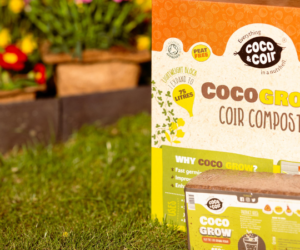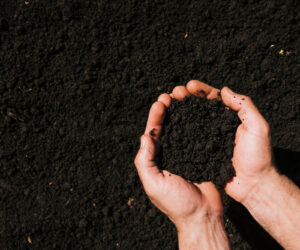Creating the Perfect DIY Potting Mix with Compost
Hey there fellow gardeners!
If you’re like us, you love getting your hands dirty in your garden and watching it flourish. But do you ever wonder what’s going on beneath the surface in those pots and planters? IN this article, we will delve into the fascinating world of potting mix and explore the art of its creation. We’re going to demystify the art of creating your DIY potting mix with the help of compost.
Let’s get started!
What is compost?
First things first, let’s talk about our star ingredient – compost. It’s like the Swiss Army knife of gardening. It is a mix of various organic materials, such as coir and composted bark that is packed with nutrients and provides excellent moisture retention, making it a great foundation for your potting mix.
So, why should you opt for compost? There are quite a few reasons – it is versatile, cost-effective, and offers balanced nutrition. It is truly a true Jack-of-all-trades.
Assess Your Plants’ Needs
Before diving into the DIY mix, think about what your plants need. Are you growing succulents, vegetables, herbs, or tropical plants? Each has its own set of requirements, and a custom potting mix can make all the difference.
Benefits of using DIY Potting Mix
- Cost savings: Making your potting mix is often cheaper than buying it pre-made, especially if you have access to free or low-cost ingredients, such as compost and leaves.
- Customisation: You can tailor your potting mix to the specific needs of your plants. For example, if you are growing succulents, you can make a mix that is more sandy and well-draining. If you are growing vegetables, you can make a mix that is richer in organic matter and nutrients.
- Quality control: When you make your own potting mix, you know exactly what is in it. This can be especially important if you are growing organic plants or if you have plants that are sensitive to certain chemicals.
- Sustainability: Making your own potting mix is a more sustainable option than buying pre-made mixes, which contain peat, a non-renewable resource.
Essential Components of a DIY Potting Mix
- Compost As the core element of your mix, compost provides crucial nutrients, enhancing soil structure, and retaining moisture, all of which are essential for your plant’s well-being. This should be the foundation of your potting mix.
- Organic Matter: The introduction of organic matter, such as garden compost or well-rotted manure, is essential. It not only enriches your mix but also aids in water retention, keeping your plants adequately hydrated.
- Perlite: To ensure proper drainage in your potting mix, consider adding perlite. Perlite creates air pockets in the soil, helping prevent root rot and waterlogged conditions.
- Worm Castings: Worm castings, often referred to as “black gold,” provide a fantastic way to boost your potting mix’s nutrient content. These castings, produced by nature’s gardeners, the worms, enrich the soil with supercharged nutrients.
- Lime or Sulphur: Just as humans have preferences, so do plants. Lime can be used to raise the pH level of your mix, while sulphur can lower it. Find the right pH balance to create a favourable environment for your plants.
Recipe for DIY Potting Mix
Now that we’ve covered the basics, let’s get to the fun part! Here’s a simple recipe for DIY potting mix using compost:
Ingredients:
- 3 parts compost
- 2 parts organic matter (garden compost, well-rotted manure, etc.)
- 1 part perlite
- 1/2-part worm castings
Instructions:
- Combine all ingredients in a large container or wheelbarrow.
- Mix thoroughly until all ingredients are evenly distributed.
- Your potting mix is now ready to use!
Tips for Using Your DIY Potting Mix
- When potting your plants, be sure to fill the pot about 1/3 of the way with potting mix before placing the plant in.
- Gently backfill around the plant, tamping down the potting mix lightly to remove any air pockets.
- Water the plant thoroughly after potting.
- Fertilize your plants regularly according to their individual needs.
Bonus Tips
- If you’re growing succulents, you may want to add more perlite to your mix to improve drainage.
- If you’re growing vegetables or herbs, you may want to add more organic matter to your mix to provide extra nutrients.
- If you’re growing tropical plants, you may want to add more perlite and worm castings to your mix to improve drainage and nutrient retention.
- Be sure to adjust the pH of your potting mix as needed to suit the needs of your plants.
Common Challenges with DIY Potting Mixes
- Pests and diseases: If you notice pests or diseases in your potting mix, it is important to isolate the affected plants and treat them immediately. You may also need to dispose of the potting mix and start fresh.
- Root rot: Root rot is a common problem with DIY potting mixes, especially if the mix is too dense or does not drain well. To prevent root rot, make sure that your potting mix is well-draining and that you are not overwatering your plants.
- Nutrient deficiencies: If your plants are showing signs of nutrient deficiencies, you can fertilize them with a balanced fertilizer. You may also need to add more organic matter to your potting mix to improve its nutrient content. You can also use all-purpose compost like Coco Boost All Purpose Compost which is specifically designed to consistently provide nutrients.
- pH imbalance: The pH of your potting mix can affect the availability of nutrients to your plants. If you are unsure of the pH of your potting mix, you can test it with a pH meter. If the pH is too high or too low, you can adjust it with lime or sulphur.
Want more tips and tricks?
We regularly write about the best gardening tips, tricks and practices for gardeners like you. Here are some of the latest ones:
- The Science of Soil and How Multipurpose Compost Can Enhance Soil Fertility
- Sustainable Gardening: 5 Tips to Grow Exquisite Summer Flowers
- How To Set Up a Greenhouse for Sustainable Year-round Gardening
- ……more
Want these delivered to your inbox? Enter your email ID at the bottom of this screen.
Show off your greens
Did you grow something in your garden that you’re proud of? We’d love to see! Share a picture on Instagram and tag @Cocoandcoir. We will credit you if we use your picture.












